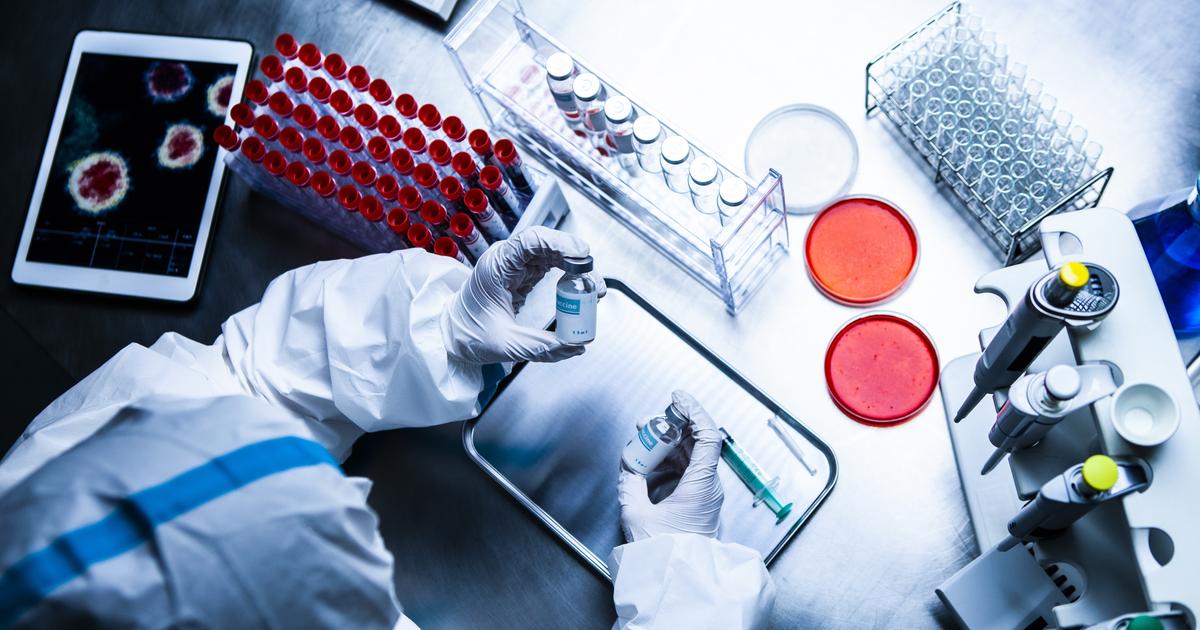The Spanish biotechnologist César de la Fuente is leading an investigation to transform wasp venom into new synthetic antibiotics that fight multi-resistant bacteria.
The method has already been patented and shows efficiency and safety in mice.
De la Fuente and his team reprogrammed the venom's molecules so that it was not toxic to humans, thus opening up new avenues to cure hundreds of infectious diseases.
The results of the work, published today in the journal
PNAS
, reveal that the anti-infective activity of the venom is similar to that of the best antibiotics used today in hospitals: gentamicin and imipenem.
“To give an idea,” says De la Fuente, a professor at the University of Pennsylvania, “with our antibiotic we managed to get 80% of the mice to survive a lethal infection.
Without treatment, all the animals would have died within a week ”.
The new work is relevant because, if it worked in humans, it would save millions of lives.
José Miguel Cisneros, head of the infectious diseases service at the Virgen del Rocío Hospital in Seville, affirms that the study is very welcome because it is a “different and innovative” approach to solve one of the most serious public health problems on the planet.
"Every year more than 35,000 people die in Spain from infectious diseases related to multi-resistant bacteria," says Cisneros.
In the world, the annual death toll due to the absence of effective and safe antibiotics to combat multi-resistant bacteria reaches 700,000 people.
The projections for the future are much more dire.
The World Health Organization warns that, if new drugs are not produced, in 2050 10 million people will die a year in the world as a result of intractable infections.
It is estimated that it will be the leading cause of death from disease.
De la Fuente affirms that that is why it is urgent to create new antibiotics that do not have bacterial resistance.
"What is happening today is that bacteria have developed mechanisms to survive and inactivate the antibiotics that we have in hospitals and pharmacies," says the researcher. And he adds: "We have used antibiotics in a massive way and now the bacteria are generating resistance. The antibiotics that we have today no longer work very well. "
The World Health Organization warns that, if new drugs are not produced, in 2050 10 million people will die a year in the world as a result of intractable infections
The scientist, who did a doctorate in Microbiology and Immunology at the University of British Columbia in Canada with a grant from La Caixa, explains that bacteria evolve very quickly, they divide every 20 minutes and this leads them to adapt to new situations, for example , to survive exposure to antibiotics.
De la Fuente says that the venom of this wasp, known in the scientific world as
Vespula lewisii,
had been known for several years, but it had not been possible to use it because its compound was very toxic.
“In our group of bioengineers we take it as a challenge: is it possible to reprogram this molecule in the laboratory so that it can be used as medicine?
That was the question that motivated the study ”, acknowledges De la Fuente.
In the process of molecular reprogramming, the researchers did a computational study to identify the pattern sequence of the double antimicrobial and immunomodulatory activity of the venom.
Antimicrobial because it is able to kill or stop the growth of bacteria directly;
immunomodulatory because it stimulates the immune system and indirectly helps the body fight disease.
For Dr. Cisneros, the most attractive thing about the research is the double effect of the poison.
"It would be fantastic if these studies could be confirmed with other scientific groups, which is what happens when an experiment is done for the first time," explains Cisneros.
De la Fuente says that after making the model on the computer, they synthesized the molecules in a robot in order to reprogram them.
"Molecules are small proteins called peptides, made up of chains of amino acids.
The interesting thing is that amino acids can be eliminated, edited, repositioned, or even others can be added to the chain.
The analogy I usually use is that we play Lego with molecules and through this game we can modify their biological function ”, says the scientist.
Another novel feature of reprogrammed venom is that it has anti-inflammatory properties.
"They are interesting because in any infection there is an inflammatory response and in many cases this generates a serious situation that sometimes leads to death," insists De la Fuente.
"We found that wasp venom can also decrease these acute inflammatory responses."
Cisneros assures that the part of the study that is methodologically less clear is the use of two bacteria (
Escherichia coli
and
Staphylococcus aureus
) that have not yet generated total resistance to current antibiotics.
"I think it would have been more interesting to compare it with bacteria against which we do not currently have effective antibiotics or with toxicity problems, to see if the venom has the same antimicrobial activity."
The next step, according to De la Fuente, is to continue doing experiments like the one proposed by Cisneros and move towards the preclinical phase of human trials.
“We have patented this invention.
Now we want to work to test it in patients.
We know that it is a slow process, in the medium term, but we do not lose sight of it.
Our ultimate goal is to save millions of lives. "
Cisneros and De la Fuente agree that it is the first time that animal venom has been used to produce antibiotics and that this search, "curious and a bit counterintuitive", will be decisive for the development of new drugs.
"Finding antimicrobial activity in the venom of a wasp, manipulating it to remove toxic compounds that are lethal to humans, and turn it into a medicine is a poetic process," concludes Cisneros.
You can follow
MATERIA
on
,
,
or subscribe here to our
newsletter
.

/cloudfront-eu-central-1.images.arcpublishing.com/prisa/STRELDLVOJCIXES3DGXSNNXGUI.jpg)






